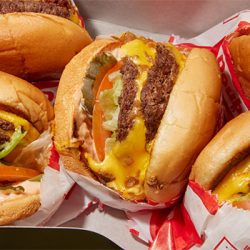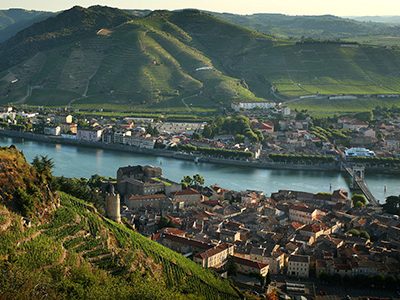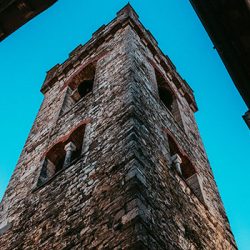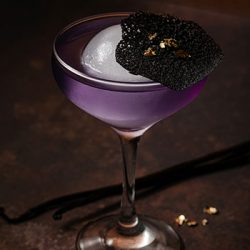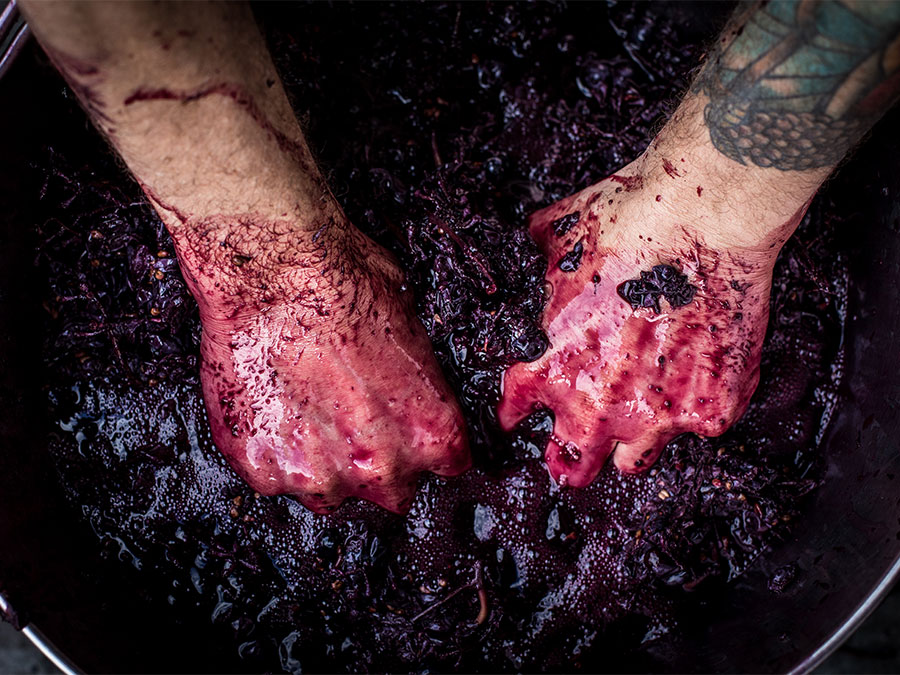

In their early days as winemakers, living in San Francisco’s Mission District, Mike and Anne Dashe dined at The Slanted Door almost weekly. They fell in love with Charles Phan’s Vietnamese cuisine, befriended the wine director, Mark Ellenbogen, and remained regulars long after the Door moved out of the Mission to the Ferry Building, where it became, for the next decade, the hottest restaurant in that restaurant-crazed city.
Phan’s pungent, fiery dishes, precisely marrying sweet and heat, often made for difficult wine pairings. Ellenbogen noted early on that many California red wines, with their high alcohol and lavish oak treatment, clashed with the flavors. On his list, white wines vastly outnumbered reds; often, West Coast reds were simply absent.
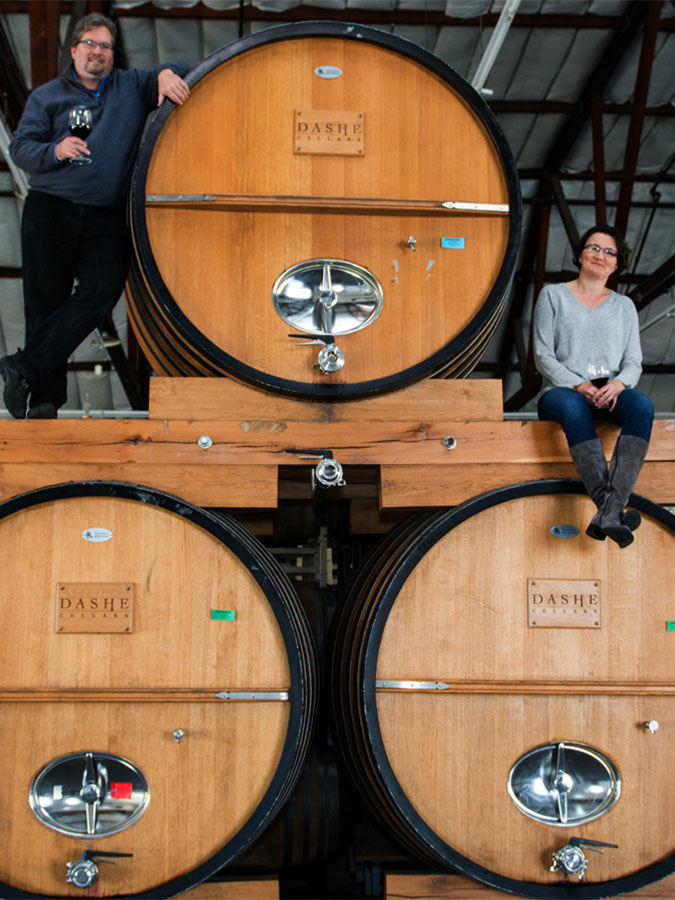

Some California producers were miffed: “It’s tunnel vision,” fumed one detractor, “his reasoning is singularly bizarre.” Eventually, Ellenbogen reached out to Mike Dashe and asked him if he could make a red wine aimed at the menu’s narrow bandwidth of flavors: something light, low in alcohol, low in tannin, and without an oak imprint. It was a type of wine that had all but disappeared from the California red-wine repertoire, but Dashe gave it a go in 2007 with, of all things, zinfandel.
Just days before, Dashe had been offered a block of zinfandel from Guinness McFadden, who farms a high-elevation parcel in Mendocino’s Potter Valley in Mendocino County, the vines surrounded by gewurztraminer, pinot blanc and riesling. It was such a cool site that the zin rarely colored up, staying on the vine very late into the season.
Dashe took the fruit, fermented it using ambient yeasts with partial carbonic maceration, then aged it in large foudres with limited sulfur additions. He called it L’Enfant Terrible. It was, he said, the first red zinfandel he’d ever made that he could see through; it was so lightly extracted that he was certain Ellenbogen would reject the wine, and he and Anne would be obliged to drink it all themselves. But Anne, born in Brittany and an alumna of the University of Bordeaux, set him straight: “That’s exactly what it should taste like,” she said. “You really have to shake off your preconceived notions.”
When we talk of zinfandel, we all think we know what we mean: bold fruit, ample body, tooth-staining tannin and formidable alcoholic strength. As for descriptors, to paraphrase Joel Peterson, the founder of Ravenswood, any antonym for “wimpy” generally works. Rarely does the variety get props for its range of expression, its adaptability or its delicacy. This is despite plantings that run the length of California, from Rancho Cucamonga to Ukiah and back again along the western slopes of the Sierra, covering more geographical and climatic terrain than any other variety in the state—except, perhaps, chardonnay. Moreover, zinfandel dominates the state’s old-vine stocks, a testament to its resilience and value.
All of these attributes have drawn in a new generation of winemakers, lured by its heritage status and old-vine cachet. But they have no use for preconceived notions: instead, they’re harvesting earlier, applying alternative winemaking techniques, and proving that zinfandel is anything but a monolith: that it can accommodate a range of styles, that it’s pliable and expressive when you go against the grain. “It’s such a prized grape, and Prohibition culled all the crappy sites,” says winemaker Martha Stoumen. “If you pick it in the right moment where it shows a sense of place,” she adds, “it’s almost like a map, a collective lens of what California terroir is.”
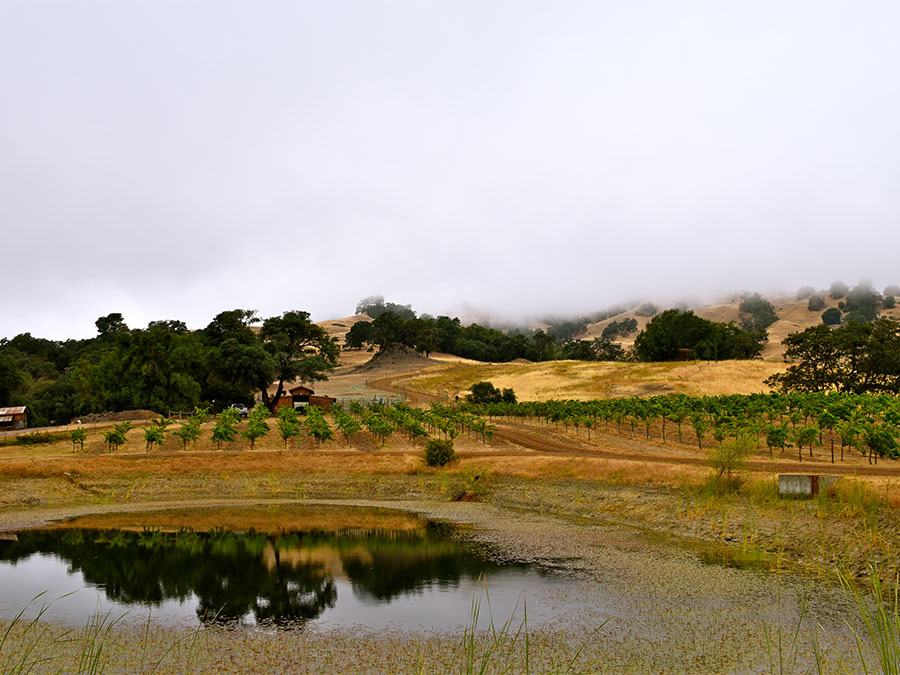

Zinfandel draws in its people in myriad ways. For some, it’s ZAP, the Zinfandel Advocates and Producers tasting, a bacchanal held each January in San Francisco. For some, it’s by way of the classic bottlings of Ridge or Storybook Mountain, or more ultra-traditional bottlings from Sky, Nalle or Green & Red. For Chris Brockway of Broc Cellars it was the David Goines label on a Ravenswood bottle, with its eye-catching triskelion of ravens locking legs—that, and the wine’s price. “When you’re young and you’re broke, there aren’t many wines you can buy on your own,” he says, “but even expensive zinfandels seemed inexpensive.”
Brockway remembers tasting Dashe’s see-through zinfandel with Ellenbogen at Slanted Door. This was just after Brockway had moved to the Bay Area and taken a job at Rosenblum Cellars in Alameda, directly across the Bay from the restaurant, and a winery where, in every sense, the mindset was diametrically opposed to wines like Les Enfants (now plural, as grenache, cabernet franc and carignane have gotten the same treatment at Dashe). Working with winemaker Jeff Cohn, Brockway made dozens of zinfandel bottlings annually in the house style, often from single vineyards, indistinguishable from each other owing to their ripeness, big black wines with sweet fruit and high alcohol.
Brockway likes to say he came away from this stage with a vivid sense of what he didn’t want to make. His first solo zinfandel came from Lodi fruit in 2002, made in the Rosenblum cellar, and picked so much earlier than what was usual for Rosenblum that Cohn snuck enzyme additives in the fermenter to goose the color. “He thought he was doing me a favor,” says Brockway with a laugh. “He didn’t want me to be embarrassed.”
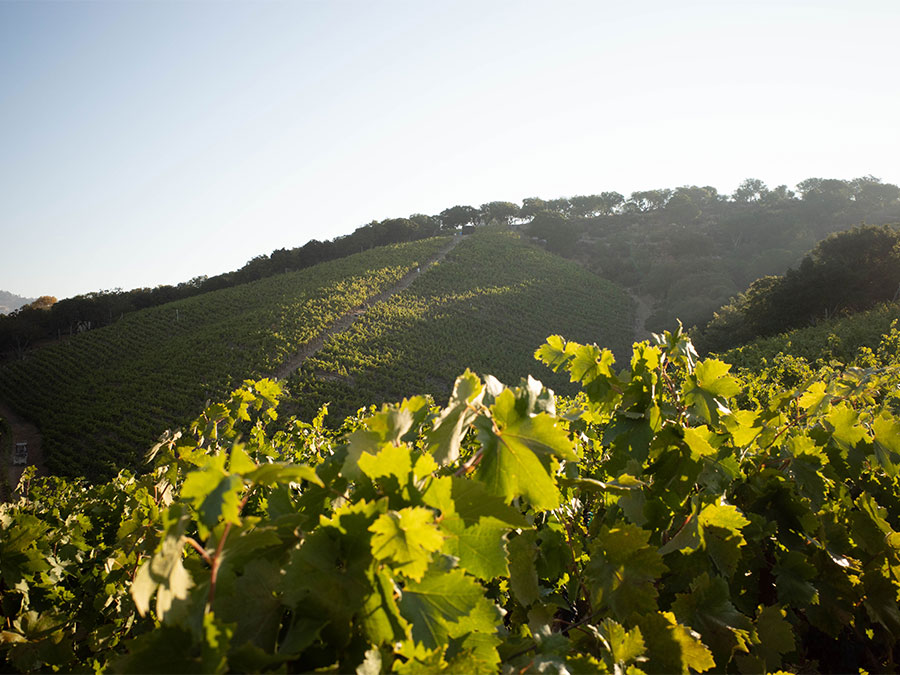

After he started his own venture, Brockway began sourcing fruit from vineyards within the Rosenblum pantheon. Picking earlier than his old boss wasn’t that difficult (he hewed to an alcohol range between 12.5 and 13.5 percent), but the right balance still took some years to locate. Early wines from a vineyard in Forestville called Buck Hill were promising, with juicy fruit and exceptionally bright acidity, but they lacked length.
In 2009, however, Brockway purchased fruit from Arrowhead Vineyard, just east of the town of Sonoma, on a slope that amounts to the tail end of the Mayacamas Range. It was so steep and rocky that owner Brad Elster had to prepare the site for planting with dynamite. Come harvest, Brockway’s crew perches perilously on a fifty-five degree slope, collecting fruit into bins strapped to their backs. But talk about backbone: the Arrowhead grapes provided the extra power and length that Buck Hill lacked. Brockway’s Vine Starr has been a two-vineyard blend ever since. Both vineyards express themselves with every sip, the strawberry fruit from Buck Hill moving seamlessly to more savory Arrowhead components, black tea and celery seed. “I feel like I’m doing a field blend, but I’m doing it with two different vineyards,” he says.
Not only this, but Vine Starr has proven to be every bit as versatile for spicy dishes as Dashe’s Les Enfants did at Slanted Door, on the authority, no less, of Shizuku Kanzaki, the fictional Japanese sommelier in the wine-themed manga series, Drops of God. In a brief scene in volume 13, Kanzaki pairs Vine Starr with a fiery Korean beef dish, and the wine transports him, as often happens in Japanese manga, to another place altogether: in this case, a night walk in a cool quiet forest.
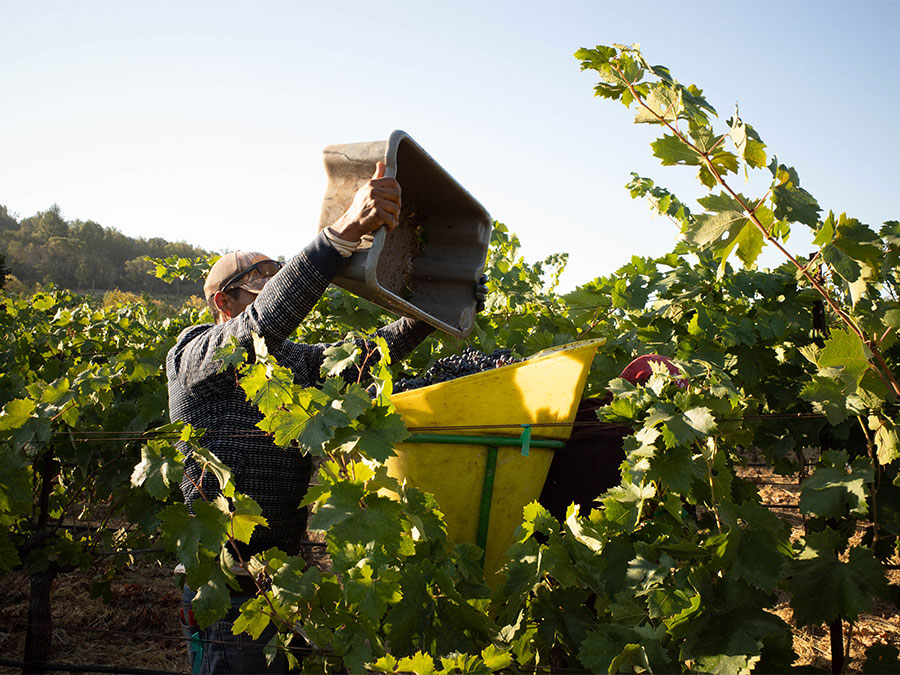

In the first decade of the 2000s, at the University of California–Davis, wines like Vine Starr and Les Enfants Terribles made an impression on a group of students who came of age during an especially fertile period of wine exploration. Martha Stoumen, Diego Roig, Shaunt Oungoulian and others formed a tight bond at Davis, where they learned the essentials of winemaking technique in a brand-new, state-of-the-art winemaking facility. But to hear them tell it, they found inspiration elsewhere.
On weekend drives to San Francisco, the group would pool their funds and purchase wines at Arlequin and Ruby Wine from importers like Joe Dressner, Zev Rovine and Selection Massale, “It was the flavor and energy of those wines that spoke to me first,” says Martha Stoumen, “and it just so happened they were made naturally. This kept happening again and again. I’d chat with friends about my favorite wines in a line-up, and we’d usually agree. Only later, researching them, would we come to find they were natural.”
Stoumen, Roig and Oungoulian would go on to work in close proximity for the next decade, together and alone. “We came in at a really good time,” says Oungoulian, who with Diego Roig would go on to found the Populis and Les Lunes brands. “Natural or low-intervention wines were more or less part of the zeitgeist. Most of us had the goal of starting their own venture, as opposed to working as an oenologist at a fancy Napa winery. We could be open-minded and curious.”
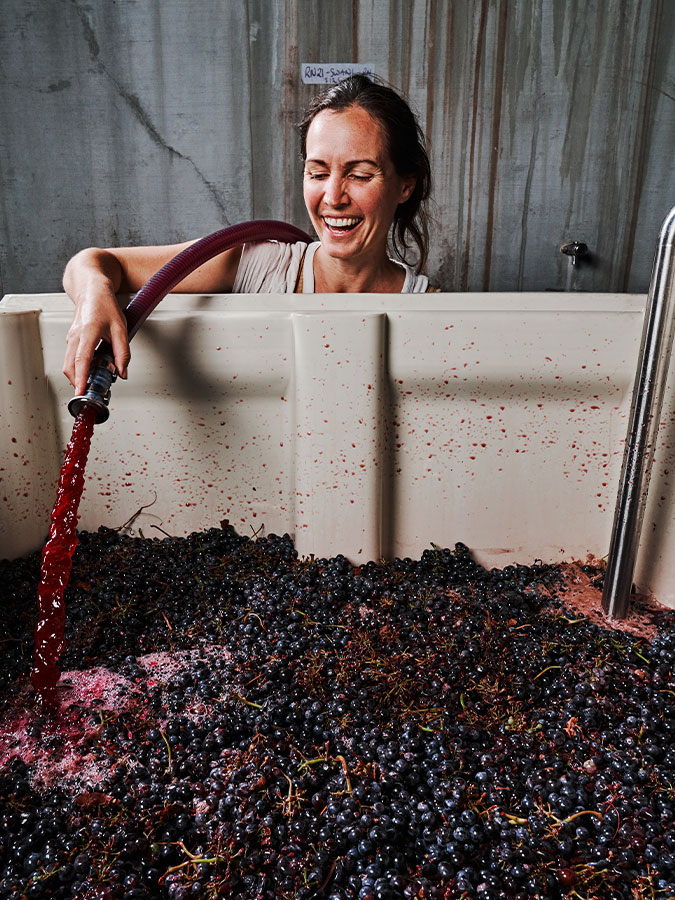

On one of their trips to the Bay Area, they paid a visit Broc Cellars, and got their first taste of Vine Starr. “His carbonic cabernet franc and the Vine Starr were the standout wines,” says Roig. “It was lighter than most zinfandel, but it still was ripe, still had structure and beautiful acidity. It made me realize that this variety had so much more potential than was being expressed at the time; it pushed us into a completely different category of wine.”
Stoumen was so taken with Broc’s approach she’d go on to be Brockway’s assistant winemaker, and help make Vine Starr for many vintages. But she credits an early stint in Sicily with Giusto Occhipinti for her interest in zinfandel. “He used to tell me it was important to say something with your indigenous grapes,” she recalls. Still, when it came to zinfandel she didn’t feel inspired. “Everything tasted like port to me,” she says. “I noticed ripe fruit and some structure, but prune is prune. I couldn’t relate. It was all too homogeneous.”
Occhipinti pressed her. “‘I wonder if you can look at it differently,’ he said, and he pointed to nero d’Avola. Nero was thought of as Sicily’s rich wine, with a big alcoholic profile. But in the right soils, grown in the right way with less extraction, you could get great expression.”
All three winemakers did separate stages with Didier Barral in Faugères; Oungoulian and Roig said they came away with a strong affinity for the Languedoc’s old vines. Back in California, they made wine out of Oungoulian’s parents’ garage in Orinda, searching out mixed-black vineyards in Mendocino and elsewhere where zinfandel was a signature grape variety, seeking to convince growers their fruit didn’t belong in a bulk bin. Old vines became one of their hallmarks. “It was,” says Roig, “our opportunity to contribute to California’s viticultural history.”
Zinfandels from Stoumen, Roig, Oungoulian, and others—like Wolfgang Weber’s En Cavale, Kenny Likitprakong’s Hobo Wine Company, Graham Shelton’s Slow Dance, Patrick Cappiello’s Monte Rio, Mikey Giugni’s Scar of the Sea zin, and Birichino from John Locke and Alex Krause—have fallen into the slipstream of Vine Starr and Les Enfants, wines with alcohol levels that hover around 13 percent or less. Tasting them side-by-side, they feel like they’ve been rebuilt from the same components as conventional zinfandel, but they’re streamlined, lighter, with bright fruit, electric in their crunchy berry energy—those last three words not typically associated with California zinfandel.
Getting zinfandel to conform to this new paradigm isn’t always easy. Cool sites are extremely important, says Mike Dashe. “Warmer places develop more sugar by the time that they are physiologically ripe,” he says. “Cooler sites become physiologically ripe often when the sugar is only at 23 Brix or so.”
But when you do this, you run into zinfandel’s tendency for peripatetic ripening: it’s not uncommon for green berries and raisins to be growing on the same vine, even the same cluster. It’s why most producers leave the fruit to hang, to allow for the underripe fruit to catch up to the ripe fruit and avoid green flavors—with higher alcohol the result.
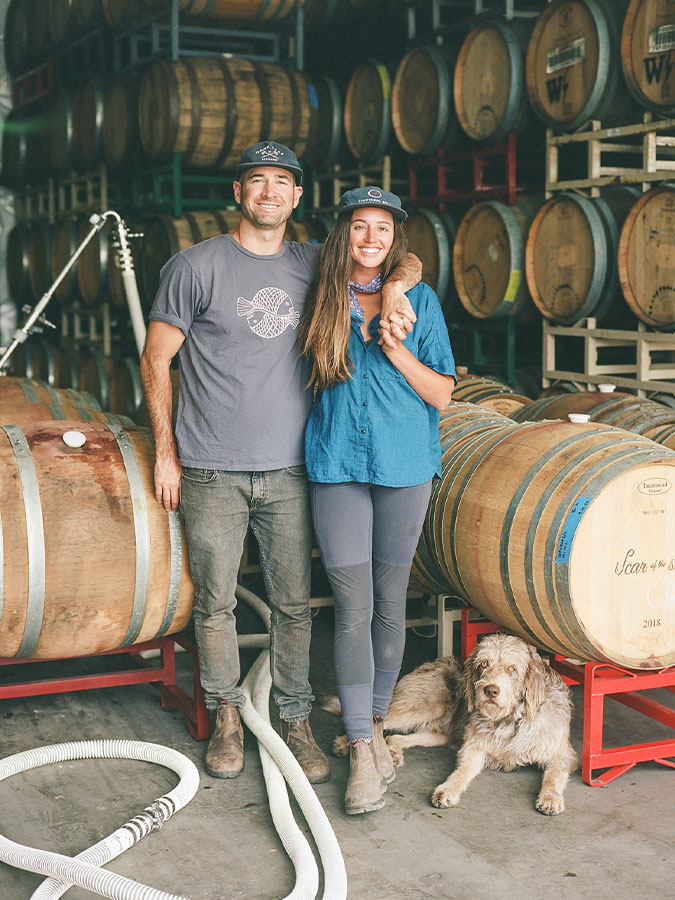

If you’re aiming for sub-14 percent potential alcohol, the self-regulating magic of old vines helps, but even then, picking decisions are critical. Trying to get it right, you run squarely into zinfandel’s other prevailing tendency: wild fluctuations in sugar ripeness at the cusp of harvest. “You can go out and get samples and get a number that looks good,” says Roig, “and by the time you get it to the winery, it’s three degrees Brix lower, or sometimes two degrees higher. You have to factor in the structure of the cluster, the green berries within the cluster, and raisins, the percentage of raisins such that the sugar can spike once you get it in.”
Flirting with what Stoumen calls “sappy greenness” is important. “You want to be able to taste it going away,” she says, “but you don’t want it to be fully gone. It’s like an avocado when it ripens, under-under-under, then all of a sudden it’s over. Zinfandel’s like that. The window is narrow compared to other grapes.”
It helps to manage this tightrope if your picking decisions are dictated as much by acidity as by ripeness. “The pH is important for us,” says Stoumen. “When you’re trying to make wine you don’t have to add anything to, you want the grapes to be healthy going into tank.”
For their Les Lunes old-vine zinfandel bottling, Roig and Oungoulian take a traditional approach, using whole clusters and employing gentle pump overs. But for Populis they aren’t above more baroque building methods. Roig became interested in exploring extended maceration techniques without resorting to carbonic maceration. “How could we get more complexity, but still have something fresh and drinkable and not carbonic?” he wondered. They came up with Reversée, a not-quite-red zin that employs a reverse saignée (French producers refer to this method as flottaison), where they coferment rosé juice with added destemmed berries. “With fewer skins we reduce the amount of tannin extracted,” says Roig. “We end up with a wine that behaves like a rosé but with more color.” It’s every bit as charming as it sounds.
So is Stoumen’s Varietally Incorrect, a zin that begins with a brief (two-day) carbonic maceration and finishes with a short maturation in neutral oak; it’s as light and as pleasing as a Beaujolais. Her Post Flirtation is a more serious zinfandel, 95 percent destemmed with whole-cluster contributions of old-vine petite sirah, carignane and pinot noir; its crunchy pomegranate fruit is tethered to a mildly peppery stem spice. Both come in at 12.5 percent alcohol. “I’m not reinventing the wheel,” says Stoumen, “I’m just lightening things up a bit.”
If there’s a geographical outlier to this cohort of outliers, it’s Mikey Giugni of Scar of the Sea. Giugni works mostly with extremely cool sites on the San Luis Obispo Coast and in the south Central Coast, producing pinot noir, chardonnay, syrah and blends. But he’s from the Inland Empire and grew up near San Bernardino County’s historic winegrowing region in the foothills of the San Gabriel Mountains. He still counts as pals some of the managers of these vineyard rarities, made even rarer by the encroachment of Southern California sprawl.
Through his friend Dominic Galleano, he’s procured zinfandel from Lopez Ranch, a century-old vineyard in the Cucamonga Valley set on a dusty plot in Southern California’s historic fruit belt, now squeezed between tract houses and freeway exits. It is, he says, one of the oldest organic properties in the state—it’s been certified for more than 20 years—for the simple reason that in this high desert pest pressure is virtually non-existent. The vines have been doing their own thing for decades, adjusting to climbing temperatures and earlier picking, producing balanced fruit even when harvests are in late July.
In his single-vineyard bottling, Giugni wants to make you think of Italian wines. “I’m not looking for overtly fruity wines in general,” he says. “I want the spice, the energy, some of the green tone.” It goes to bottle just six months after finishing fermentation, so he can capture its savor. “It has a high-desert vibe to me,” he says. “It’s very dry, dry chaparral, with spicy floral components—not herbes de Provence but a Cucamonga version of that.” It isn’t always below 14 percent alcohol, but it usually is, a seemingly impossible feat for such a warm place. It’s Giugni’s most popular wine.
To contribute his own bottling to a long line of Cucamonga zins is the reason he was drawn to the site in the first place. “I love the history; I love old things,” he says. “The story is so much larger than just us; to become part of that story and tell it through our lens is exactly why we make wine.”
Patrick J. Comiskey covers US wines for Wine & Spirits magazine, focusing on the Pacific Northwest, California’s Central Coast and New York’s Finger Lakes.
This story appears in the print issue of Summer 2023.
Like what you read? Subscribe today.


